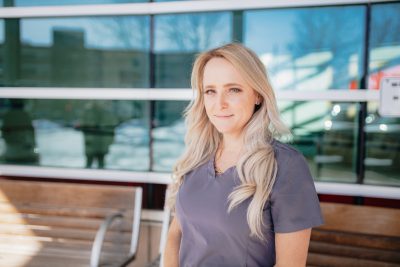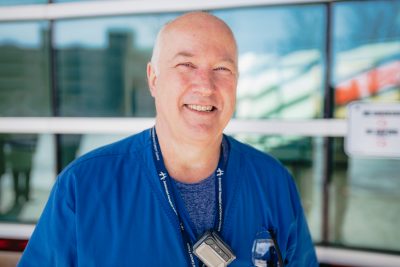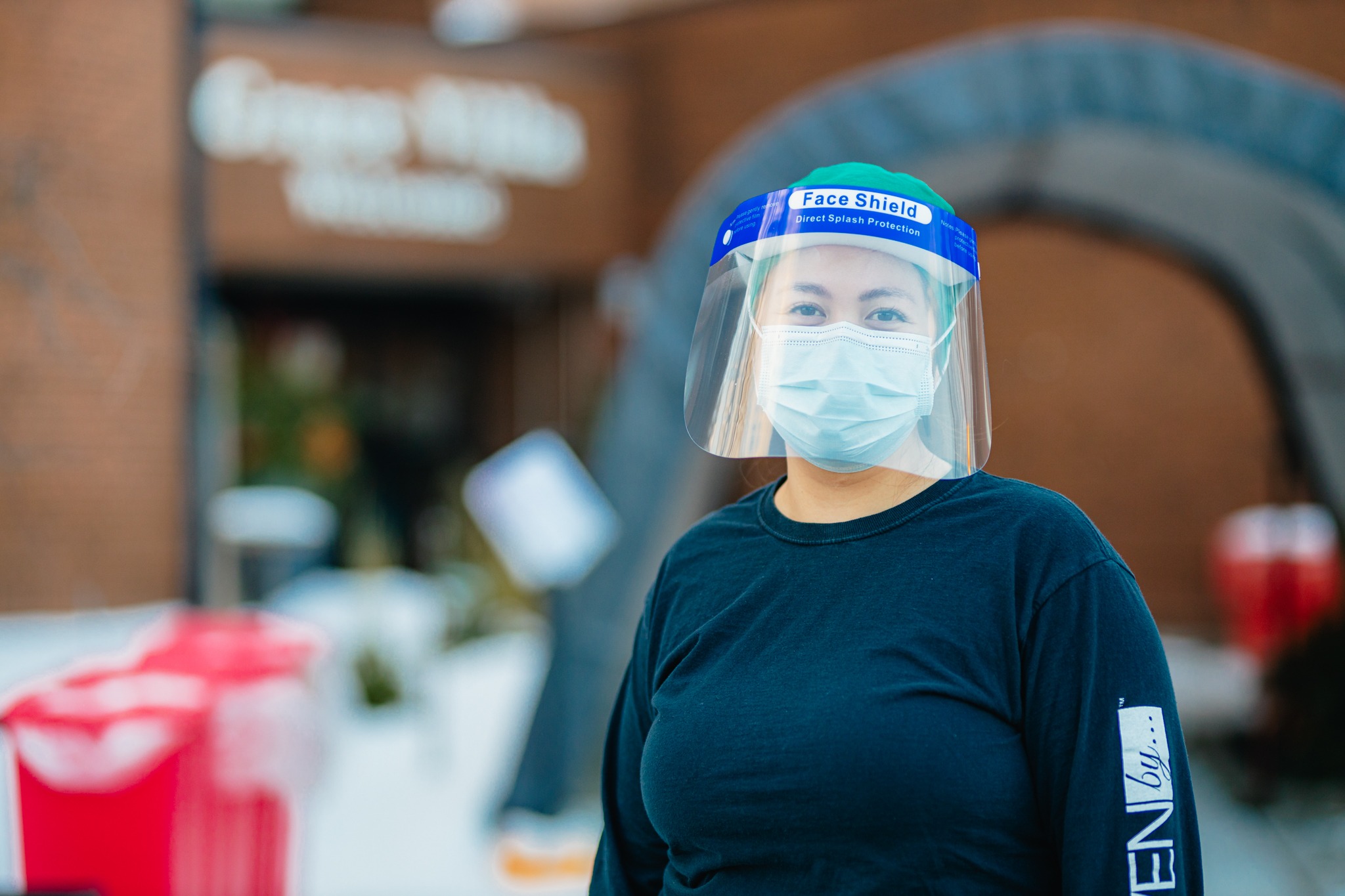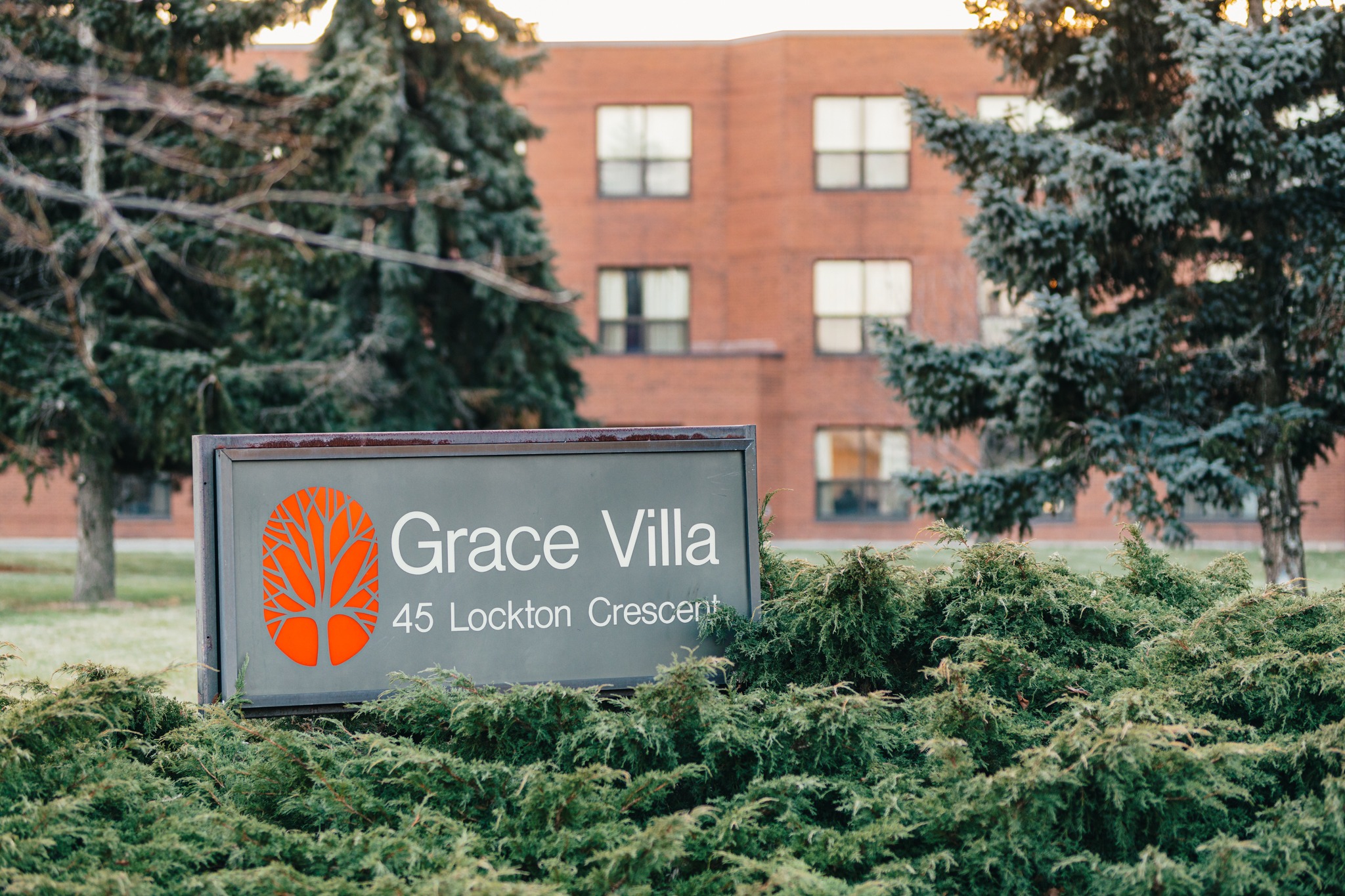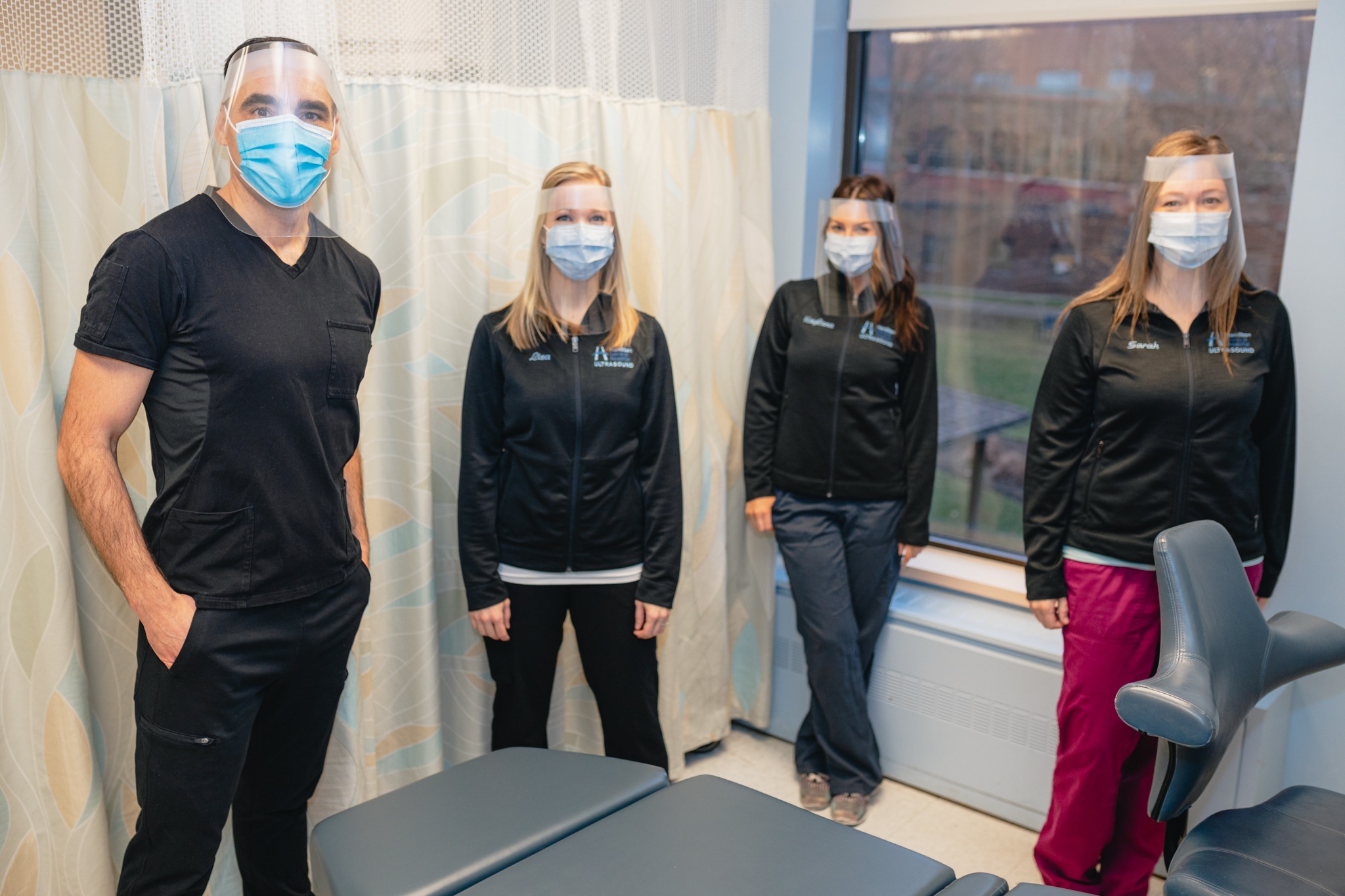
Environmental aides and porters bring “super focus” to battling COVID
Amy Stirling takes the time to talk to each patient as she works in their hospital room. She knows they miss their families while visitors are more restricted from the building.
“I have formed close connections with patients just by being a friend they can talk to while I’m in their room cleaning,” she says.
Stirling is an environmental aide at Hamilton Health Sciences’ (HHS) Juravinski Hospital and Cancer Centre (JHCC).
Environmental aides are part of the hospital’s Customer Support Services (CSS), a department which also includes porters who transport patients and materials to different areas of the hospital. At JHCC alone, CSS is a team of more than 250 staff members.
Directing traffic throughout the hospital
“I have always compared our Customer Support Service delivery model to one of an air traffic controller,” says David DiSimoni, CSS manager at JHCC. On an average day, the team manages 400-450 porter transactions. Half of those are patient transport and the other half are equipment, supplies, and specimen transport.
Jim Giles is coming up on 40 years at HHS. He started in the Health Records Department at Hamilton General Hospital. In 2012, he transitioned into a porter role at JHCC where he has been moving patients around ever since.
He says working through the pandemic has been an ongoing challenge and requires being mindful of the different precautions needed for different patients.
His favourite part of the job is interacting with patients and staff.
“Our goal is to provide care and comfort to people at some of the most challenging times in their lives,” he says. “You do the best you can and hope that you have made a difference in the patient’s experience and their time in the hospital.”
Cleaning protocols remain the same, but are more frequent
On the Environmental side of the service, the team manages approximately 100 bed turnovers on any given day.
Cleaning a room after a routine patient discharge takes about 35-45 minutes, while an “isolation clean” for rooms with confirmed or suspected infection, or if someone might have come in contact with COVID-19, takes about 60-90 minutes, depending on how many patients the room can accommodate.
While the need for isolation cleans have gone up by 50 per cent or more during the pandemic, the cleaning protocol remains the same as other isolation cleans required pre-COVID for other infections. Routine cleans are also the same as prior to COVID, it’s just the frequency of cleanings that has increased during the pandemic.
“The cleaning at HHS sites has always followed provincial infectious diseases advisory committee (PIDAC) standards, but now a room is cleaned even more times per day,” says Ian Deans, a CSS leader at JHCC. The focus now, Deans says, is working with the Infection Prevention and Control teams and CSS trainers to ensure staff have education and training related to personal protective equipment (PPE).
Changing how the service functions
For areas of the hospital that have not been directly impacted by the virus, it is mostly business as usual with heightened awareness to PPE protocols as porters and environmental aides go about their duties. For areas with high-risk patient populations like cancer care, or units in outbreak or isolation, there is a different process.
Previously, the service functioned on a centralized system. Units would enter a transport or cleaning request into an automated system and the system would dispatch a staff member based on priority and proximity. Staff would work across all units.
But during the pandemic, CSS had to change their system to ensure less movement by staff across the hospital to limit the spread of the virus. Patient populations are divided into groups and staff are assigned to them in order to reduce everyone’s number of contacts.
Staff working in an area with COVID-19 cases would have an ongoing assignment on that unit. They would require two negative COVID tests and 7 days of isolation before returning to work on a different unit.
A new normal
Stirling started working at HHS in 2007. She was drawn to JHCC’s C4 hematology/oncology unit because her mom was a patient there on and off for nine years. “Her stay inspired me to work on C4,” she says. “I felt a connection to the patients going through cancer treatments.”
More recently, Stirling has been working on F5 which has become the hospital’s COVID-19 unit.
“It can be a little more stressful but you’re also super focused and hyper sensitive about your daily cleaning tasks,” she says. “You have to be very detailed and careful while cleaning normally. But during the pandemic, I have an increased sense of awareness about everything I do.”
Across HHS sites, CSS is a team of approximately 750 environmental aids and porters who work hard to maintain the flow of patients so the hospital can function, while ensuring safety is the top priority.
“Once the pandemic hit, our normal was no longer. Our management team motto was ‘one day at a time.’ The collaboration and teamwork between our clinical departments and support from our administrators was outstanding,” says manager DiSimoni. “I’d like to send a big thanks to the CSS frontline staff, our leaders and all our partners who support us in doing our jobs to provide a safe place for our staff and patients.”

